
Plan de la ville et environs de Williamsburg en Virginie, America, May 11, 1782. 16 3/8 x 25 3/8". (Special Collections Research Center, Swem Library, College of William and Mary; photo, Colonial Williamsburg Foundation.)

Early cross-trenching at the corner of Nassau Street (bottom) and Duke of Gloucester Street (right), mid-twentieth century. (Photo, Colonial Williamsburg Foundation.)
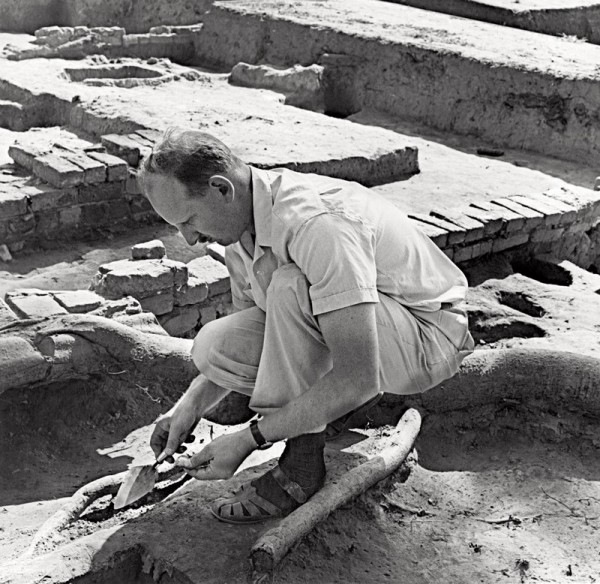
Ivor Noël Hume during excavations of Henry Wetherburn’s Tavern, 1965. (Photo, Colonial Williamsburg Foundation.)

Archaeologists Meredith Poole, Mark Kostro, and Andy Edwards excavating the Anderson Forge site, 2010. (Photo, Colonial Williamsburg Foundation.)

Flowerpot or vase, London, England, 1668–1700. Tin-glazed earthenware with Bleu persan decoration. H. 8 1/4". (Courtesy, Museum of London Archaeology, 23079.)
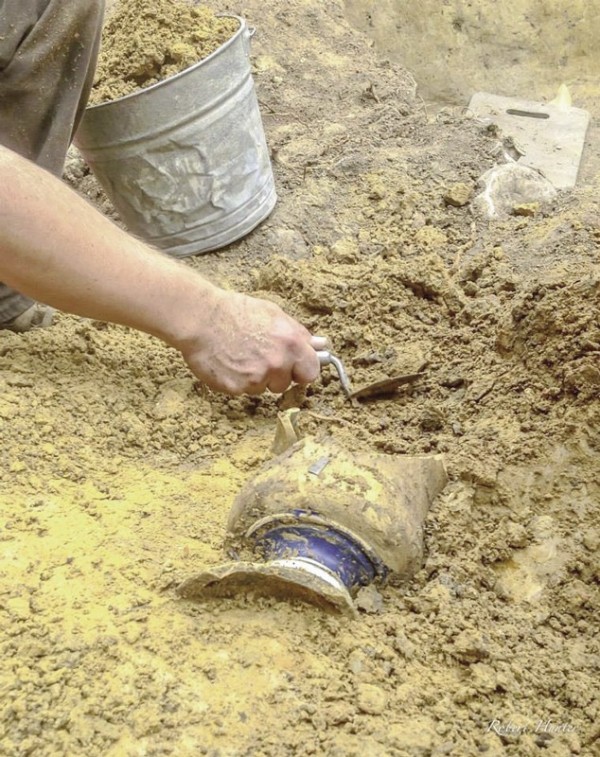
Flowerpot, probably London, England, 1680–1690. Tin-glazed earthenware with bleu persan decoration. (Photo, Robert Hunter.) Field photograph showing flowerpot excavation from the South Yard of the Wren Building at the College of William and Mary, 00008-16JA.

Teabowls, Jingdezhen, China, 1668–1700. Hard-paste porcelain. H. of bowl on left 1 3/4". Excavated from the site of the Governor’s Palace, 20AA-00261. (Colonial Williamsburg Foundation.)

Attributed to Charles Bridges (1670–1747), Portrait of Alexander Spotswood, Spotsylvania County, Virginia, 1736. Oil on canvas, 48 1/8 x 38 5/8". (Colonial Williamsburg Foundation, Museum Purchase, 1940-359.)
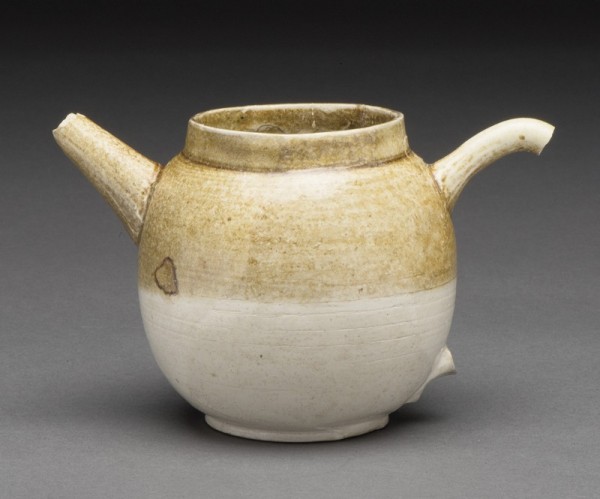
Teapot, attributed to John Dwight, Fulham, London, England, ca. 1700. Salt-glazed stoneware. H. 3 3/4". Excavated from the site of the James Geddy House, 01204-19BB. (Colonial Williamsburg Foundation.)
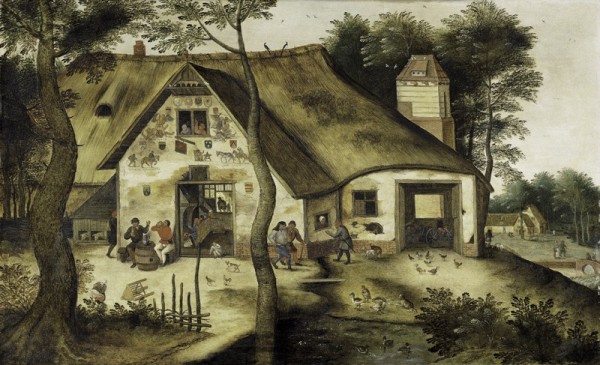
Pieter Brueghel the Younger (1564–1637/38), L’Auberge St. Michel, Brussels, Belgium, one of nine known versions painted between 1619 and 1634. Oil on panel, 20 1/4 x 33 1/4". (Courtesy, Sotheby’s.)

Martin pot or bird bottle, attributed to William Rogers’s pottery, Yorktown, Virginia, 1720–1745. Lead-glazed earthenware. L. 8 1/4". Excavated from the site of the James Geddy House, 3539.ER987D and 1329A-19.B. (Colonial Williamsburg Foundation.)

Deckelterrine (covered tureen) missing cover, Westerwald, Germany, 1750–1775. Salt-glazed stoneware. H. 1 7/8". Excavated from the site of the Anthony Hay house and cabinetmaking shop, 1526-28DB. (Colonial Williamsburg Foundation.)

Storage jar, Westerwald, Germany, ca. 1750. Salt-glazed stoneware. H. 9 3/4". Recovered from the site of John Coke’s Tavern, 0282-27AA. (Colonial Williamsburg Foundation.)
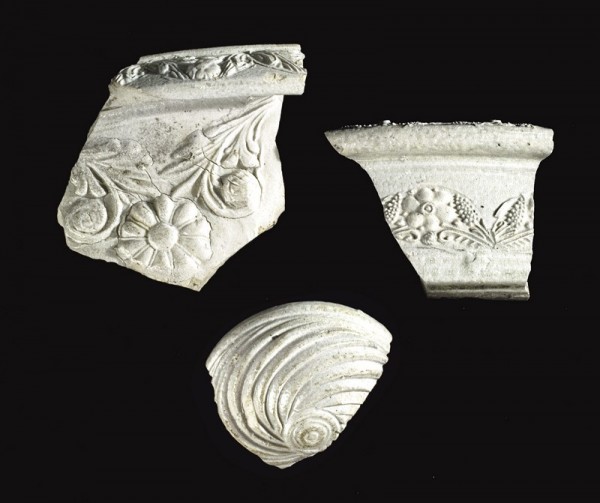
Blumenkübel (flowerpot) fragments, Westerwald, Germany, 1740–1780. Salt-glazed stoneware. Excavated from the sites of the Peter Scott house and cabinetmaking shop, Ravenscroft, and the Moody House, 00039-13JA (Scott), 00526-28FA (Ravenscroft), and 00013-02CA (Moody). (Colonial Williamsburg Foundation.)

Blumenkübel (flowerpot), Westerwald, Germany, dated 1734. Salt-glazed stoneware. H. 13". (Courtesy, Museum für Angewandte Kunst.)
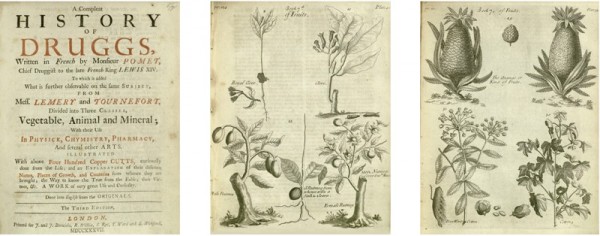
Pierre Pomet, A Compleat History of Druggs, 3rd ed. (London: Printed for J. J. Bonwicke, R. Wilkin, S. Birt, T. Ward, and E. Wicksteed, 1737), title page and pls. 46 and 54. (Courtesy, Boston Medical Library in the Francis A. Countway Library of Medicine.)

Dish, beaker, and saucer, Jingdezhen, China, ca. 1750. Hard-paste porcelain. D. of dish 14". (Colonial Williamsburg Foundation, Museum Purchase, Wesley and Elise H. Wright in memory of Mr. and Mrs. Henry Clay Hofheimer II and in honor of John C. Austin, 2012-79; The Buddy Taub Foundation, Dennis A. Roach and Jill Roach Directors, 2013-30a&b.)
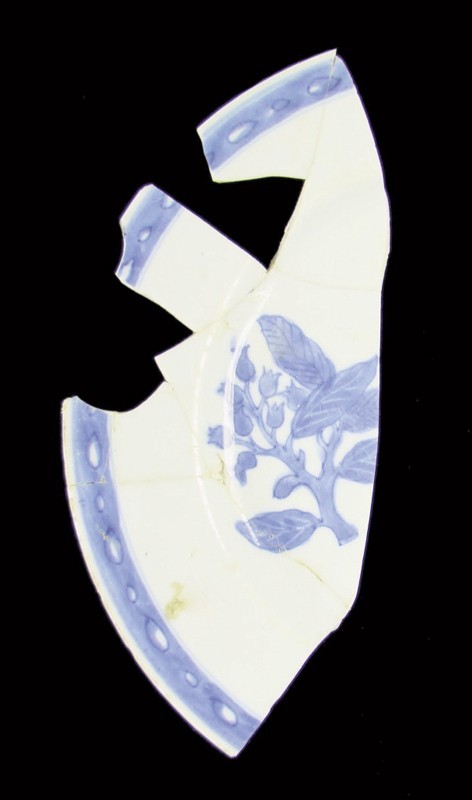
Plate fragment, Jingdezhen, China, ca. 1750. Hard-paste porcelain. D. 6 1/4". Excavated from the site of the Chiswell-Bucktrout House, ER1568R.2H. (Colonial Williamsburg Foundation.)
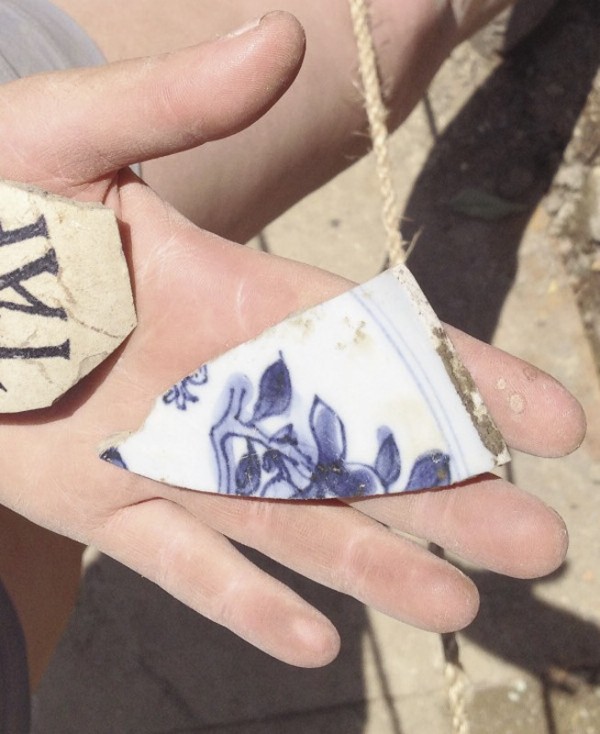
Plate fragment, Jingdezhen, China, ca. 1750. Hard-paste porcelain. Excavated from the site of the Raleigh Tavern, 17BC-00001. (Colonial Williamsburg Foundation.)
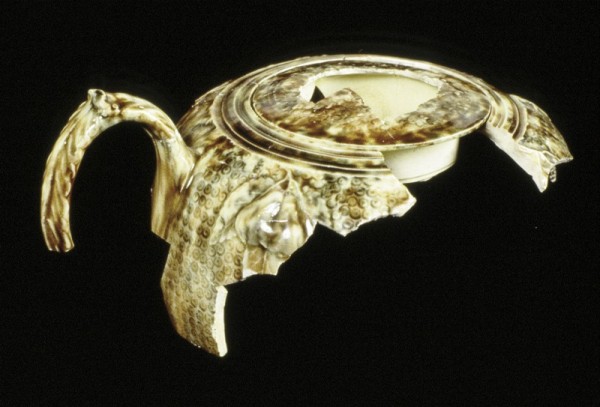
Teapot, Staffordshire, England, 1750–1755. Lead-glazed earthenware, L. 3 3/4". Excavated from the James Geddy House site, Lot 161, 01665-19B. (Colonial Williamsbug Foundation.)

Teapot, attributed to Thomas Whieldon, Fenton, Staffordshire, England, ca. 1750. Lead-glazed earthenware. H. 4 1/4". (© National Museums Scotland, A.1905.182.)

Plate, Staffordshire, England, 1760–1765. Lead-glazed earthenware. D. 9 1/2". Excavated from the site of Henry Wetherburn’s Tavern, 01730-09NA. (Colonial Williamsburg Foundation.)
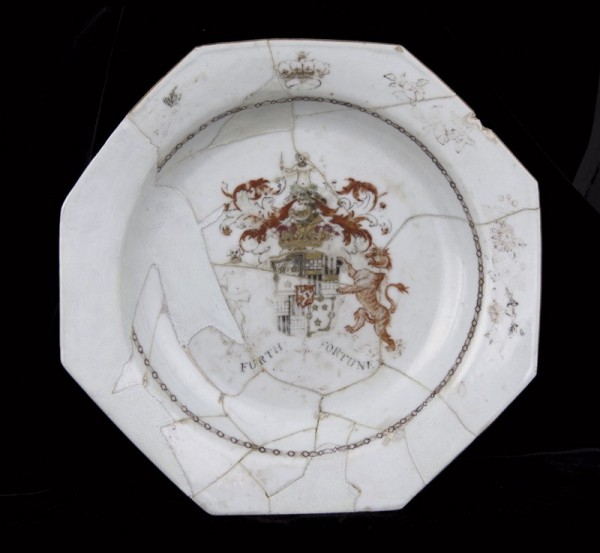
Plate, Jingdezhen, China, ca. 1755. Hard-paste porcelain. D. 9 1/4". Excavated from the site of the Governor’s Palace, 20AA-01082. (Colonial Williamsburg Foundation.)

Plate and pitcher fragments, probably manufactured in Staffordshire and printed in Liverpool, England, ca. 1783. Cream-colored earthenware. (Colonial Williamsburg Foundation.)

Detail of the printed monogram for Philip and Ann Barraud that appears on the fragments illustrated in fig. 24.

William James Hubard, Portraits of Dr. Philip Barraud and Ann Blows Hansford Barraud, Norfolk, Virginia, probably 1828–1830. Oil on canvas, 30 x 25". (Colonial Williamsburg Foundation, Museum Purchase, 1988-221, 1988-222.)
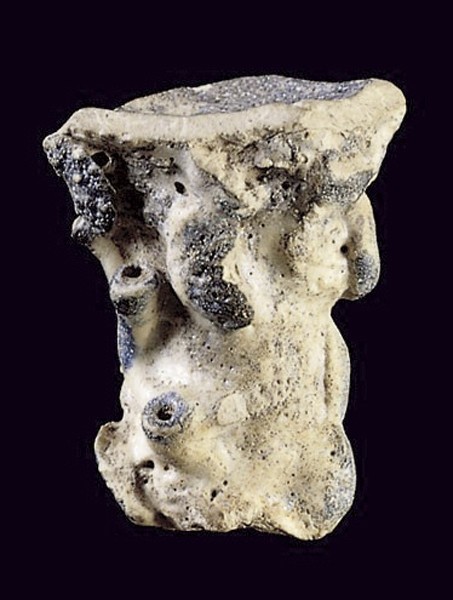
Sweetmeat or pickle dish fragment, Bow Porcelain Manufactory, London, England, 1760–1765. Soft-paste porcelain. H. 2 1/8". Excavated from the William Prentis House, 17DA-0017. (Colonial Williamsburg Foundation; photo, Gavin Ashworth.)
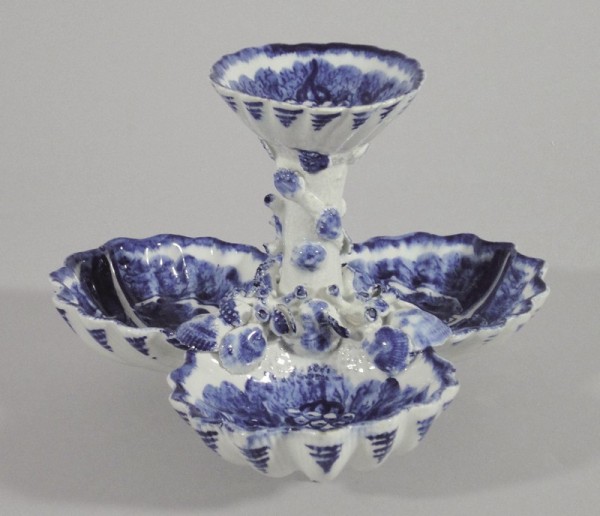
Sweetmeat dish, Bow Porcelain Manufactory, London, England, ca. 1765. Soft-paste porcelain. H. 5 1/8". (Colonial Williamsburg Foundation, Museum Purchase, Wesley and Elise H. Wright in memory of Mr. and Mrs. Henry Clay Hofheimer II and in honor of John C. Austin, 2012-88.)
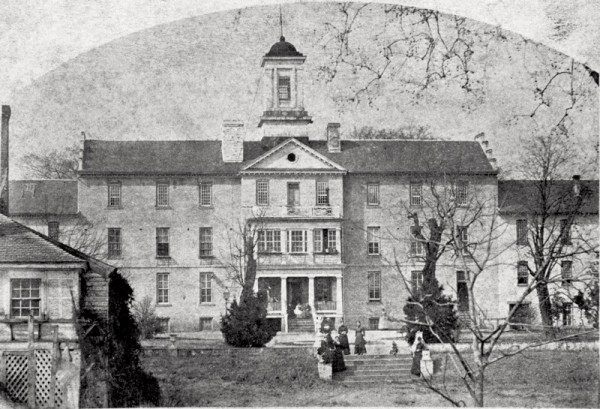
William Teiser, Eastern State Hospital (Public Hospital), Williamsburg, Virginia, ca. 1885. Black-and-white negative. (Colonial Williamsburg Foundation.)
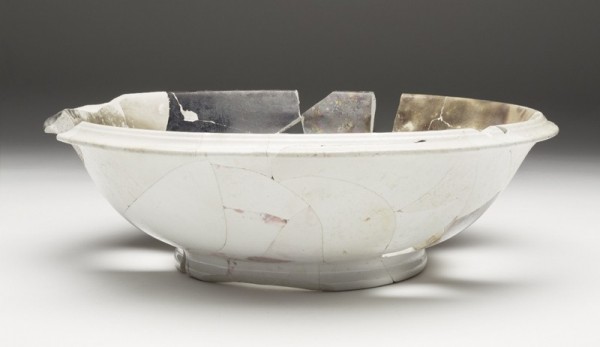
Wash basin, Sampson Bridgwood and Son, Ltd., Anchor Pottery, Longton, Stoke-on-Trent, Staffordshire, England, ca. 1870. Earthenware. D. 14". Excavated from the site of the Public Hospital, ER1713.A.F.G.H.4C. (Colonial Williamsburg Foundation.)

Detail of the mark found on the base of the wash basin illustrated in fig. 30.
